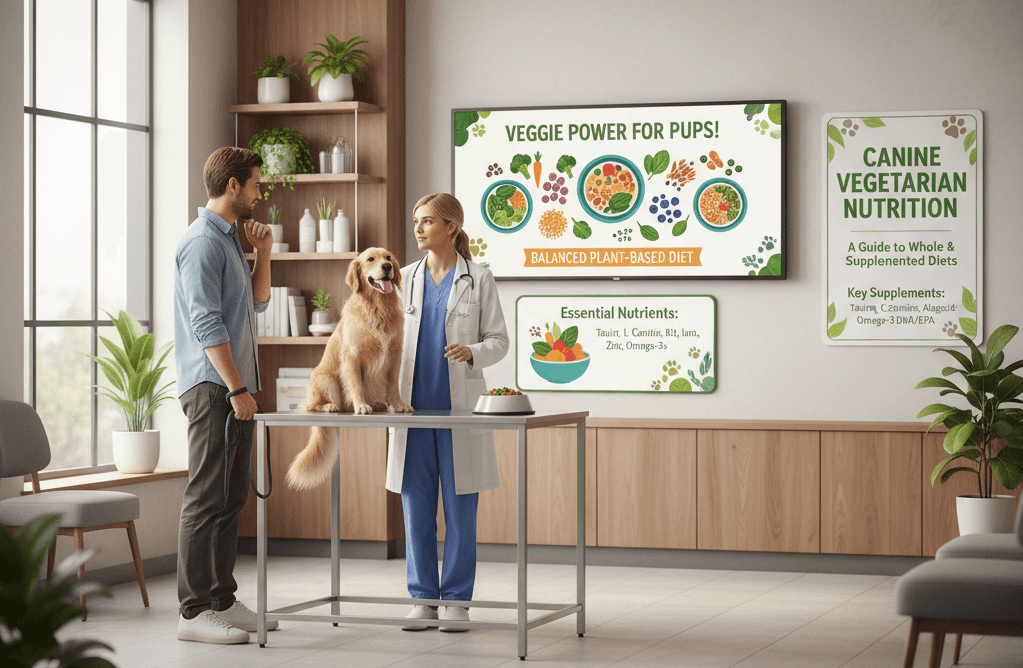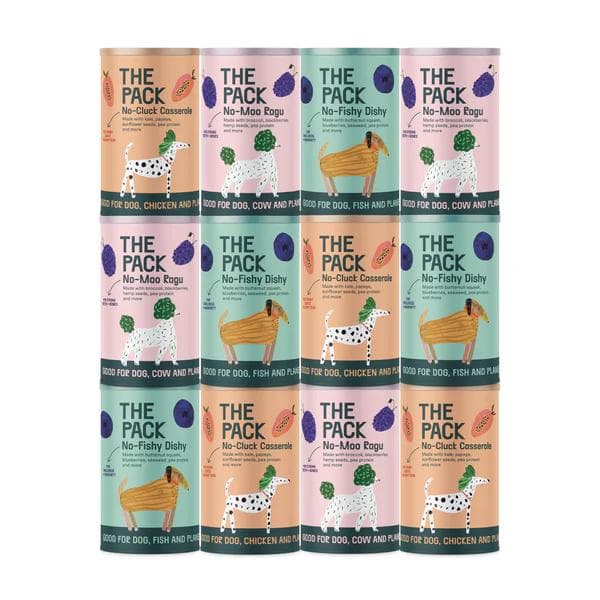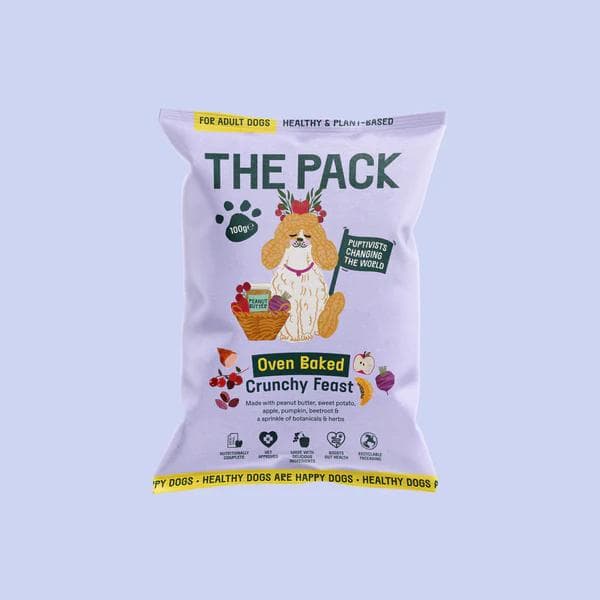Key Takeaways
Choosing the correct hypoallergenic dog food is a big part of taking care of a dog with food allergies or sensitivities and making their life better. These diets are made to lower the amount of allergens in the body and ease symptoms like skin problems, digestive problems, and long-term inflammation. Every pet owner should know these important things:
- Hypoallergenic dog food gets rid of common allergens: These diets don't include foods that often cause bad reactions in dogs, like wheat, soy, chicken, dairy, and eggs.
- Adding new proteins helps lower allergy exposure: Proteins like venison, rabbit, duck, and kangaroo are less frequent in dog food, so they are safer options for dogs with allergies.
- Hydrolysed proteins are the easiest and safest to digest: Hydrolysed formulations break proteins down into little, non-reactive molecules that the immune system can't recognise, which greatly lowers the risk of allergic reactions.
- Limited ingredient formulae make it easier to find allergens: These diets make it easy to find and get rid of bad items during elimination trials because they only have a few carefully chosen ones.
- Dietary changes need to happen slowly over time: A gradual move over 7 to 10 days gives a dog's digestive system time to become used to new foods, making the transition go smoothly and avoiding more stomach problems.
- Veterinary diets offer innovative options for urgent cases: These prescriptions often include cutting-edge ingredients like hydrolysed proteins or allergy-free choices that are meant to help people with severe allergies under the care of a doctor.
- For the best results, stay away from artificial additives. High-quality hypoallergenic diets don't include preservatives, colours, or fillers that could make food allergies worse.
- Check on the dog's health regularly to see whether the itching has gone down, the skin is clearer, the digestion is better, and the energy levels are higher. This will show that the diet is working.
Pet owners may make sure their dogs are more comfortable and healthier by choosing a hypoallergenic diet that meets their dog's individual needs. In the next sections, we'll look at the science behind hypoallergenic dog food, give you some useful ideas for picking the best ones, and give you some useful information on how to switch to these diets successfully.
Introduction
Dogs that are sensitive shouldn't have trouble eating. But a lot of pets suffer in silence from problems like itchy skin, persistent ear infections, or digestive problems, all of which could be caused by food allergies that haven't been detected yet. Hypoallergenic dog food is a specialised and trusted solution that lowers the allergens that cause such distress, making mealtime a calming experience.
These diets minimise the likelihood of allergic reactions by using a mix of substances that don't cause allergies, new ways to process protein, and simpler formulations. Hypoallergenic solutions meet each dog's specific needs by avoiding common allergens like soy and wheat or switching to hydrolysed proteins and new protein sources. This gives them respite and a means to feel better.
In this post, we'll talk about the science behind dog food allergies, what makes hypoallergenic food work, and how to pick the best food for your pet.
Learning About Dog Food Allergies
Food allergies in dogs happen when their immune system is too active and mistakes some proteins for threats. This causes an inflammatory response, which can cause a wide range of symptoms, from stomach problems to constant scratching and skin sores. Food allergies are different from intolerances, which are mostly about digestion and don't involve the immune system.
Chicken, beef, dairy, wheat, soy, and eggs are the foods that most often cause allergies in dogs. Over time, a dog's immune system can become sensitive to these proteins, making them dangerous nutrients that were once safe. There may be symptoms including hot patches, ear infections, vomiting, diarrhoea, or hair loss.
Living in dirty cities or taking a lot of antibiotics can make gut health even worse, which can make you more likely to have food allergies. Genetics also play a part; some breeds, such Golden Retrievers, Bulldogs, and German Shepherds, are more likely to have these problems.
To get an accurate diagnosis, vets often suggest elimination diets that span 8 to 12 weeks. These include giving the dog new or hydrolysed proteins and simple carbs to find and avoid certain triggers. This methodical technique makes it easier to plan their long-term diet.
What makes dog food really hypoallergenic?
Not all dog foods that say they are "hypoallergenic" really are. True hypoallergenic formulas try to get rid of or change protein allergens such that they don't cause immune responses. What makes high-quality hypoallergenic dog food different is:
The Structure of Protein Molecules
The size and shape of protein molecules can make them more likely to cause allergic responses. Traditional proteins stay whole and complete, which hypersensitive immune systems see as a threat. Hypoallergenic solutions either use new proteins that the immune system doesn't know about or chemically change proteins through hydrolysed processes so that the immune system can't see them.
Strict Manufacturing
To keep hypoallergenic diets safe, factories use tight quality standards. Dedicated production lines and intensive washing techniques keep allergies like poultry and wheat from getting mixed up with other foods.
Diets with Few Ingredients
The finest hypoallergenic foods are simple, with short ingredient lists that include only one protein source and carbs that don't cause allergies. This lowers the chance of concealed allergies and gives dog owners a clearer label to look at.
No Additives That Aren't Real
Quality meals don't have artificial preservatives, colours, or flavour enhancers, which can upset a sensitive digestive or immune system. Instead, natural means like tocopherols (vitamin E) keep things fresh.
A Scientific Look at Hydrolysed Protein Dog Food
Hydrolysed protein feeds are the best choice for dogs with very sensitive stomachs. By breaking down high-quality proteins into their most basic forms, amino acids and peptides, you can stop allergic reactions before they start.
Advanced Processing
Enzymes break down protein molecules into smaller pieces, usually less than 10,000 daltons, during the hydrolysis process. This makes sure that the immune system doesn't see them.
Benefits That Have Been Shown
Studies show that diets high in hydrolysed protein work well. A research found that 94% of dogs with confirmed food allergies became a lot better within eight weeks of switching to these diets.
Finding the Right Taste
Hydrolysed proteins may taste bad because they are bitter, but modern methods hide these flavours well, making the food safe for dogs and tasty for them.
Limited Ingredient Dog Food: Simple but Useful
Limited ingredient dog meals are a good choice for dogs with certain allergies. These diets keep allergens to a minimum by just utilising a few high-quality items. This doesn't hurt nutrition.
Important Features
- Single Protein Sources: Lamb, fish, or duck substitute common allergies.
- "Safe Carbohydrates": Foods like sweet potatoes or peas are easy to digest and don't cause any problems.
Precision in manufacturing makes sure that these formulae stay free of allergens and don't get mixed up with other products.
New Protein Sources as Options
Dogs with allergies can get all the nutrients they need from novel protein diets that use unusual food sources. By adding new proteins, they lower the hazards that come with common allergies.
New Proteins: Some Examples
If your dog is sensitive to chicken or beef, you might want to try rabbit, venison, kangaroo, or salmon instead. This wider range of food choices is good for dogs with severe or complicated allergies.
Conclusion
To manage food allergies in dogs, you need to know a lot about how allergens, the environment, and genetics work together. Pet owners can find out what makes their pets allergic and switch them to hypoallergenic foods that are meant to reduce allergic reactions using elimination diets.
Hypoallergenic dog diets are made with hydrolysed proteins, limited ingredient formulations, and new protein sources to help even the most sensitive pets. Pet owners can help their dogs feel better and stay healthy by picking well-known brands that focus on quality and accuracy (The Kennel Club UK).
In the end, the appropriate food not only improves a dog's health but also their enjoyment every day. This makes it one of the most important choices you can make for their care. Choosing the right food makes every meal a step towards better health and a stronger link between pet and owner.





